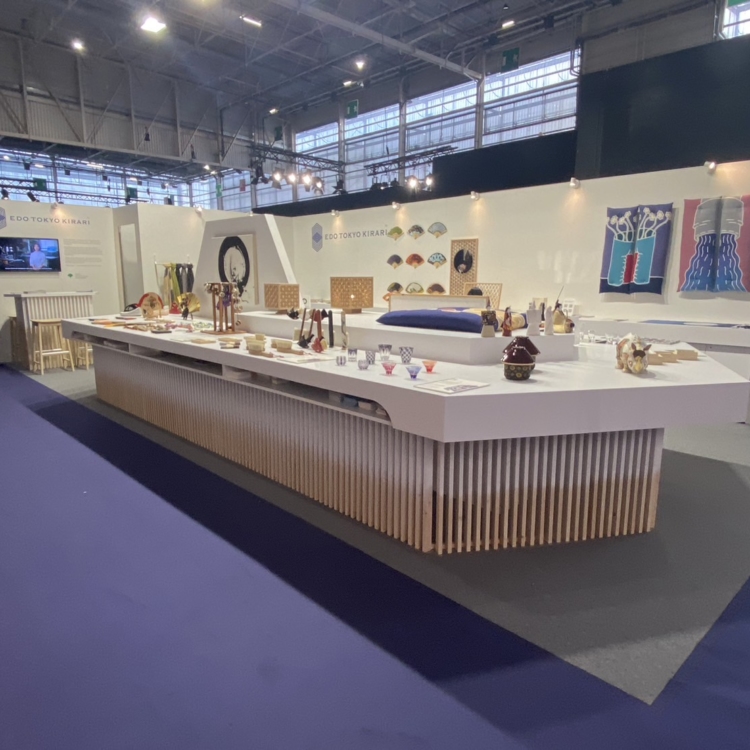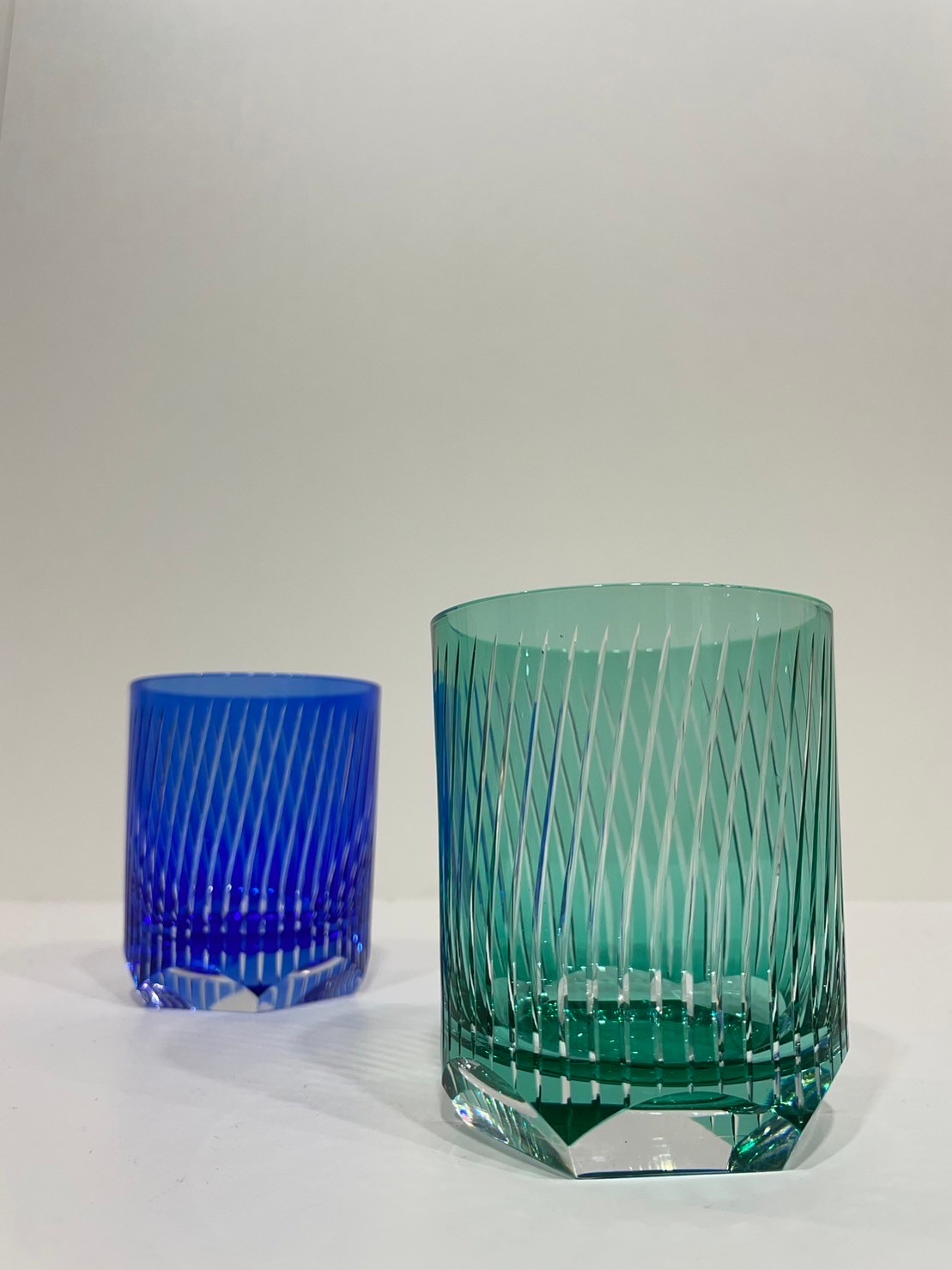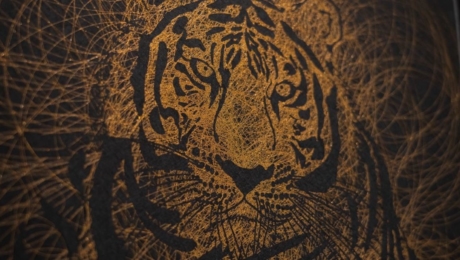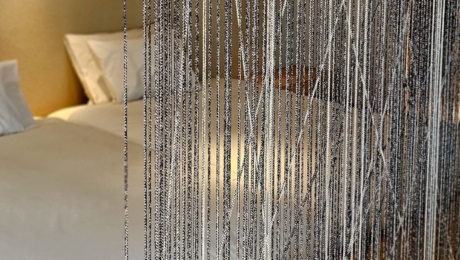

Edo chic, Tokyo’s pride, was presented at an international trade fair in France!
2024.03.29
LIFEThe Edo Tokyo Kirari Project is one that combines the skills of long-established artisans passed down from generation to generation from the Edo period with a modern sensibility to create a new Tokyo brand that will be widely disseminated. The Maison & Objet international trade show, held in Paris in January of this year, presented a great opportunity to showcase the project’s vision to the world. Twelve businesses exhibited their products at booths at the trade show, which attracts people from the interior and design industry from all around the world. Six of these presented products developed jointly with Paris-based designers.
Their collaboration is thanks to one of the two cities’ projects based on the Joint Declaration issued by Governor Koike and Mayor Hidalgo of Paris in 2021. The purpose of this collaboration is to create products that appeal to the global market by having Edo Tokyo Kirari model businesses collaborate with designers belonging to Ateliers de Paris, a design industry incubation facility in the French capital. This time, three groups of designers each collaborated with two vendors.
Starting with the first in June 2023, all product development meetings were conducted online, with the designers visiting Japan in October to check the prototypes and fine-tune them before finalizing the products. The unusual working process was even more stimulating and rewarding than the hard work involved for both the project sponsors and the designers. Let us introduce the details of each collaborative project in turn.
Ibasen
Ibasen is a long-established manufacturer of folding and non-folding fans with a history of over 400 years. The company requested a design of the twelve signs of the Chinese zodiac for a new line of fans, for which demand has been increasing in Europe due to the recent warming of the climate. Designer Jacques Averna readily agreed, saying, “In France, there is a custom of giving a gift when a baby is born, and I think a fan decorated with an animal of the year of birth is very unique and meaningful.” It was difficult to apply the design to the folded fan, but after many revisions, Averna’s signature colorful pop illustrations were applied to the entire surface of the fan, completing the product. The shape of the fan is that of the traditional Edo fan, with its thick, wide folding frame, but when the fan is opened, a modern, bold pattern appears. The stylishness and sophistication valued by the people of Edo have been brought to life in the modern age.

Edo Kumiko Tatematsu
Edo Kumiko Tatematsu makes various products using the technique of Kumiko, which is used mainly for fittings. After discussions with designer Nelson Fossey, they decided on a mirror for this product. Fossey, who said, “I want to create Kumiko as an art object, not as an architectural element,” proposed a minimalist design that combines a square frame with a diamond-shaped Kumiko and a round mirror. Hearing that the mirror represented the sun and the moon, and the Kumiko work (abstractly) a flock of birds soaring in the sky, the Tatematsu team was inspired, saying, “It was a fresh proposal that would not have occurred to our craftworkers.” During the production process, the mirror was designed to be almost weightless against the Kumiko work, and grayish Jindai cedar was used as an accent to contrast with the Akita cedar. The goal was to create a product that would blend in with a wide variety of interiors, not only in Japan, but around the world.

Hanashyo
Hanashyo, a company that brings traditional Edo faceting (Edo Kiriko) to life through the hand-cut and polished work of its craftspeople, collaborated with Nelson Fossey to create a whiskey glass. “It was difficult to understand how much detail could be created with the thin colored cased glass of less than 1 mm thickness, which is a characteristic of Edo faceting,” said one of the designers. “But we focused on how to express geometric motifs, which are Fossey’s specialty, with Edo faceting techniques and design. A Hanashyo representative said, “We were very happy with the result. After many prototypes, we selected a motif that resembles flowing water from a number of patterns reminiscent of the water used in whiskey making. The result is a simple yet sophisticated glass with a series of gentle curves cut in a clear blue hue.

Kimoto Glass Tokyo
Kimoto Glass, a glass wholesaler that connects craftspeople with customers, has recently been producing glasses for a variety of sake-drinking occasions. The company collaborated with the design unit AC/AL to create a stylish sake-drinking vessel for everyday use with a French sensibility. From seven tempting ideas, with mass production in mind, they finally settled on a design based on the image of a French conical water tower. The body of both the glass and the carafe are thin, and only the base is extremely thick, conveying the beauty of the sparkling light concentrated at the base and the presence and weight of the drinking vessel when held in the hand. “The free and new ideas of these top French designers and the skill that goes into making Edo glass—the pride of Tokyo—have a wonderful chemistry.”

Chikusen
Chikusen, a long-established manufacturer of yukata (summer kimono) that were loved by the people of Edo, asked AC/AL to develop a new product made of fabric dyed with traditional patterns and sandwiched between glass. From among various proposals, the company decided to commercialize a tray that could be easily incorporated into daily life. The designer’s intention was to “shine a spotlight on Chikusen products through simple, timeless, and functional objects.” He designed a gently curved glass tray sandwiching fabric bearing Manju-chrysanthemum (marigold) and Japanese-clover patterns in two styles: one with a wooden base and the other with wooden handles. The end product was two trays that accentuate the beauty of traditional patterns. “Resonating with the patterns that have been passed down from generation to generation within our company and combining the creativity of both AC/AL designers, the result is truly an ‘old meets new’ product.”

Marukyu Shoten
Representatives of Marukyu Shoten, which designs and sells yukata and tenugui (hand towels) using the unique Japanese stencil-dyeing technique called Chusen, say that the opportunity to approach design from a different cultural perspective by working with a French designer “has led to novel discoveries for us, as our usual ideas and product creation tend to lean toward a Japanese cultural perspective.” This time, the challenge was to create art panels dyed with J Jacques Averna’s humorous and unique graphics. The six different designs, each symmetrically divided into two parts, depict images from everyday life, such as light emitted from a pendant or a vase with flowers arranged in it. Furthermore, the traditional cotton-filled futon-making technique used to create the finished product gives the fabric a voluminous feel and makes it tremendously impactful when hung on the wall. As unique works of art, they are expected to generate a strong response both in Japan and abroad.

The new products created through these collaborations were well received at Maison & Objet, and the Edo Tokyo Kirari booth was crowded with visitors during the five-day exhibition from January 18 to 22. Many of these visitors expressed a great deal of interest in the products, commenting on their “innovative design” and “impressive craftsmanship and adherence to tradition.” This exhibition was surely a big step forward in communicating to the world the appeal of the “treasures of Tokyo that possess the essence of Edo chic.”






